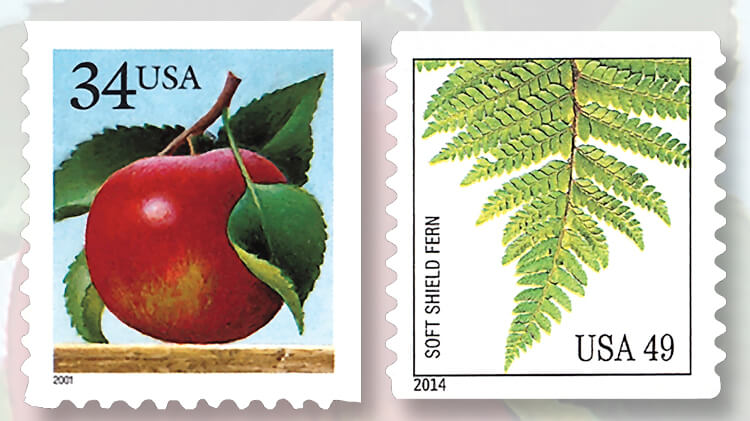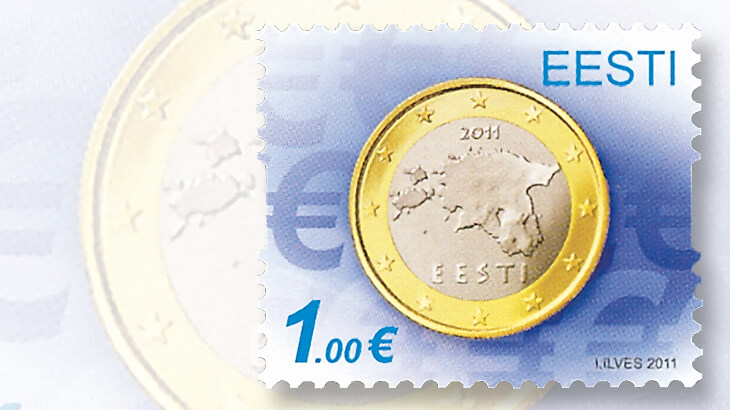World Stamps
Then and now: How worldwide stamp collecting costs have changed
By Martin J. Frankevicz
Another year of new issues has been processed, and it is time once more to look at the costs to obtain the new issues created for all of the various foreign stamp-issuing entities listed in the Scott catalogs.
The digital edition of the January 18, 2016, Linn’s Stamp News posted online charts (www.linns.com/en/insights/yearly-cost) compiling the number of major listings, their face value and their catalog value at the time of listing for the various stamp-issuing entities for the years 2002-2014. We have updated these files, and added the chart for 2015. These charts can be found only on the Linn’s digital edition website.
The STAMP COUNT column notes the number of stamps issued by the country in the stated year. It is a count of major Scott listings only. Minor varieties are excluded. If such items were to be included in the base total for major numbers, the figures would increase dramatically for some countries. Because a Scott major number can identify a single stamp or a sheet of many different stamps, it can be difficult to compare the stamp outputs of two different countries.
Connect with Linn’s Stamp News:
Sign up for our newsletter
Like us on Facebook
Follow us on Twitter
The FACE VALUE column shows what a collector would pay for the stamps at a post office window in the country, using that country’s currency. No shipping or handling fees, often added when ordering stamps by mail, are included.
The CATALOG VALUE column lists the catalog values at which the stamps were first listed. Some stamps have had value changes since then. Extreme changes in currency exchange rates can complicate the comparison of values in some countries from year to year.
The NOTES column contains explanations and limitations for information shown. In this column, we track items that we did not assign catalog values to when listed, do not include in the totals, and items that have dates of issue that we are not certain about. Boxes that are shaded have information that we believe is complete for the year. The totals shown include stamps listed as of Dec. 13, 2016, which comprise stamps that appear in the January 2017 Scott New Listings Update.
As noted above, these lists have been compiled since 2002, and we are still compiling this information. To put that into historical perspective, when we first started gathering this data, the United States was still reeling from the September 11, 2001, terrorist attacks in New York and Washington, D.C., and had just begun taking the fight to Afghanistan. The war with Iraq was still a year in the future.
 Why collecting U.S. stamps in 2016 has been significantly costlier than it was in 2015: The cost to collect one each of all of the mint United States postage stamps and postal stationery items issued in 2016 was nearly double last year's cost.
Why collecting U.S. stamps in 2016 has been significantly costlier than it was in 2015: The cost to collect one each of all of the mint United States postage stamps and postal stationery items issued in 2016 was nearly double last year's cost.
A young fellow named Barack Obama was a senator, not working in Washington, though, but in Springfield, Illinois, representing a district in Chicago. Donald Trump was still a year away from becoming the host of The Apprentice.
The euro had just started circulating as currency in Europe when 2002 began, so these lists have never recorded stamps denominated solely in Deutsche marks, Italian lire, Spanish pesetas, or French francs. In those initial days of being the new currency of a good chunk of Europe, 1 euro was worth about 87¢. At the start of 2017, 1 euro was valued at about $1.04.
The British pound was worth about $1.41 at the start of 2002. In 2007, the pound ran up to more than $2, but at the beginning of 2017 had sunk to about $1.23, the lowest it has been since the 1980s.
Canada and Australia have seen their currencies go from valleys to peaks and back down to valleys over those years as well. But currencies that float do that from time to time.
What is perhaps most interesting on these lists is comparing the cost of the year’s stamps for a country in 2002 with the cost from 2014 or 2015. That’s when you realize that there really has been a significant change.
One of each of Canada’s 40 stamps from 2002 cost a paltry $38.65 in Canadian funds as opposed to $142.45 in 2015. For Great Britain, the 2002 cost was £35.58, compared to £152.16 in 2015. Indeed, much of this can be attributed to many countries issuing far more stamps per year in recent years than they did in 2002.
But a fair amount of this increase can also be a function of inflation. That is perhaps best seen when viewing the catalog listings.
In 2002, the standard postage rates within the country for the United States, Canada, Australia, Great Britain, and France were 34¢, 48¢, 45¢, 27 pence, and 46 centimes, respectively. By 2015, those postage rates for those same countries in the same order were 49¢, 85¢, 70¢, 63p, and 68c. All one can say about this type of inflation is “Ouch!”
MORE RELATED ARTICLES
Headlines
-
US Stamps
Oct 7, 2024, 3 PMMcMurtrie dismissed as APS education director following Sept. 21 arrest
-
US Stamps
Oct 7, 2024, 12 PMVasiliauskas named president of Mystic Stamp Co.
-
US Stamps
Oct 6, 2024, 5 PMApgar souvenir card available
-
US Stamps
Oct 6, 2024, 4 PMFirst Continental Congress and U.N. stamps receive Scott catalog numbers










